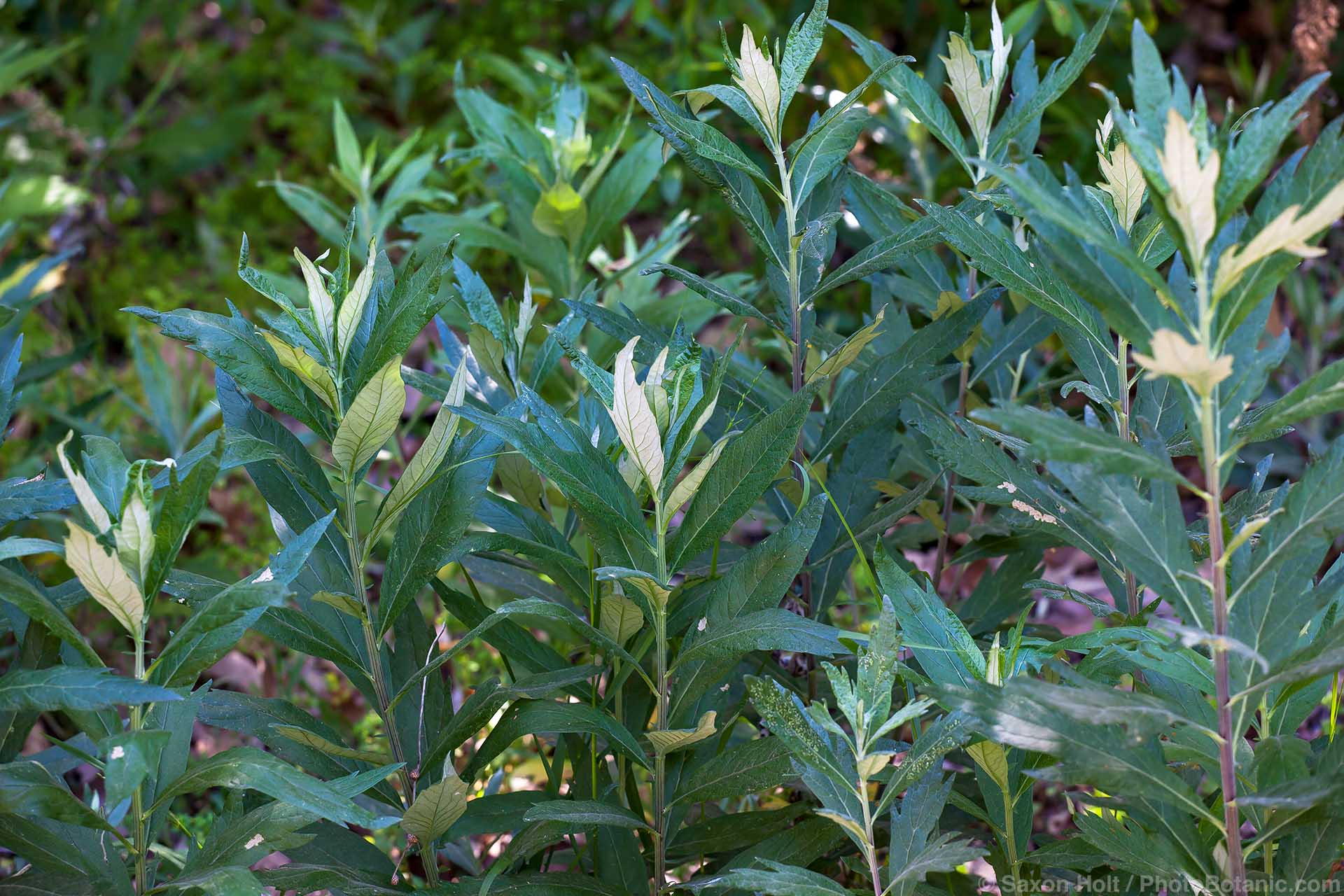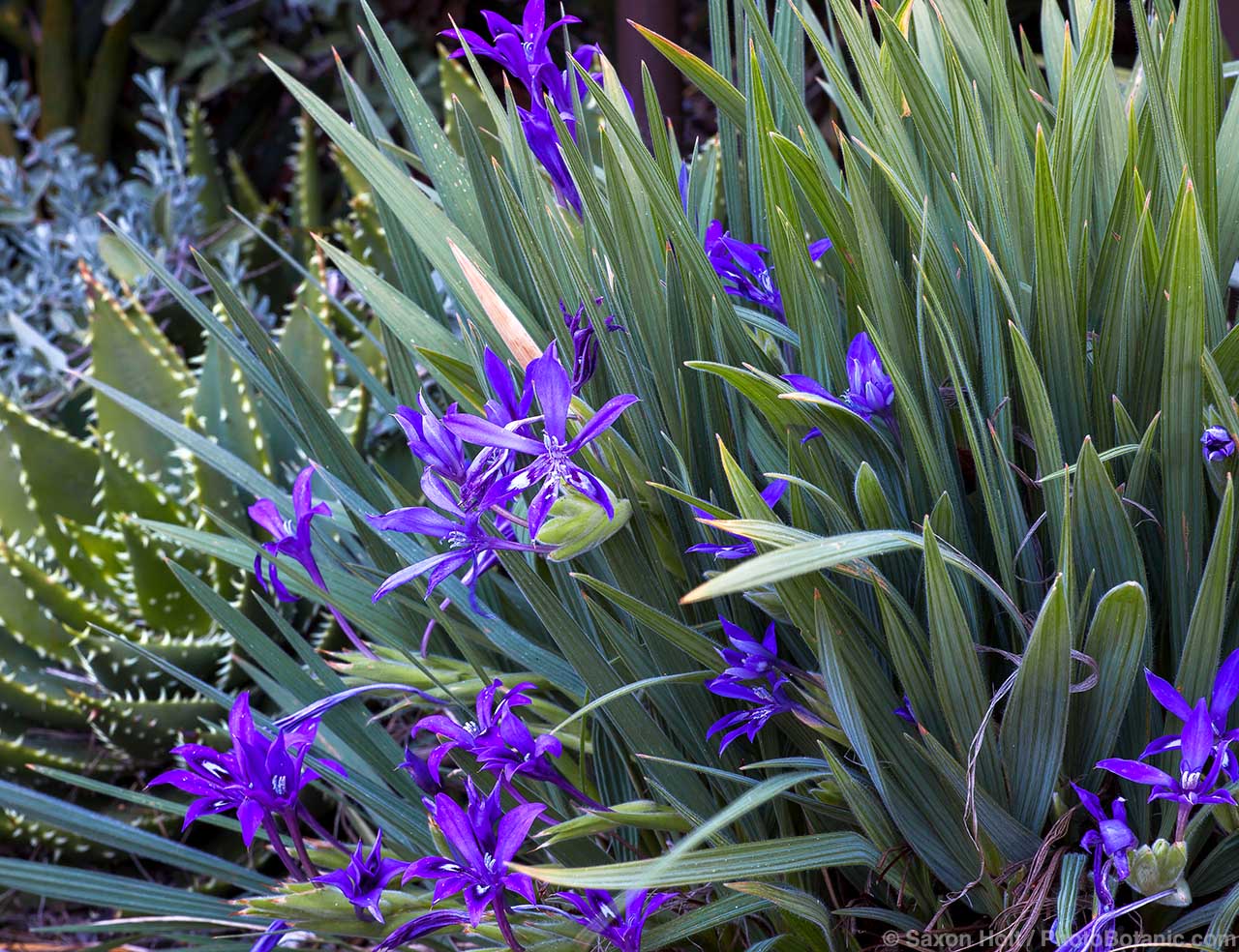Shrub Poppies
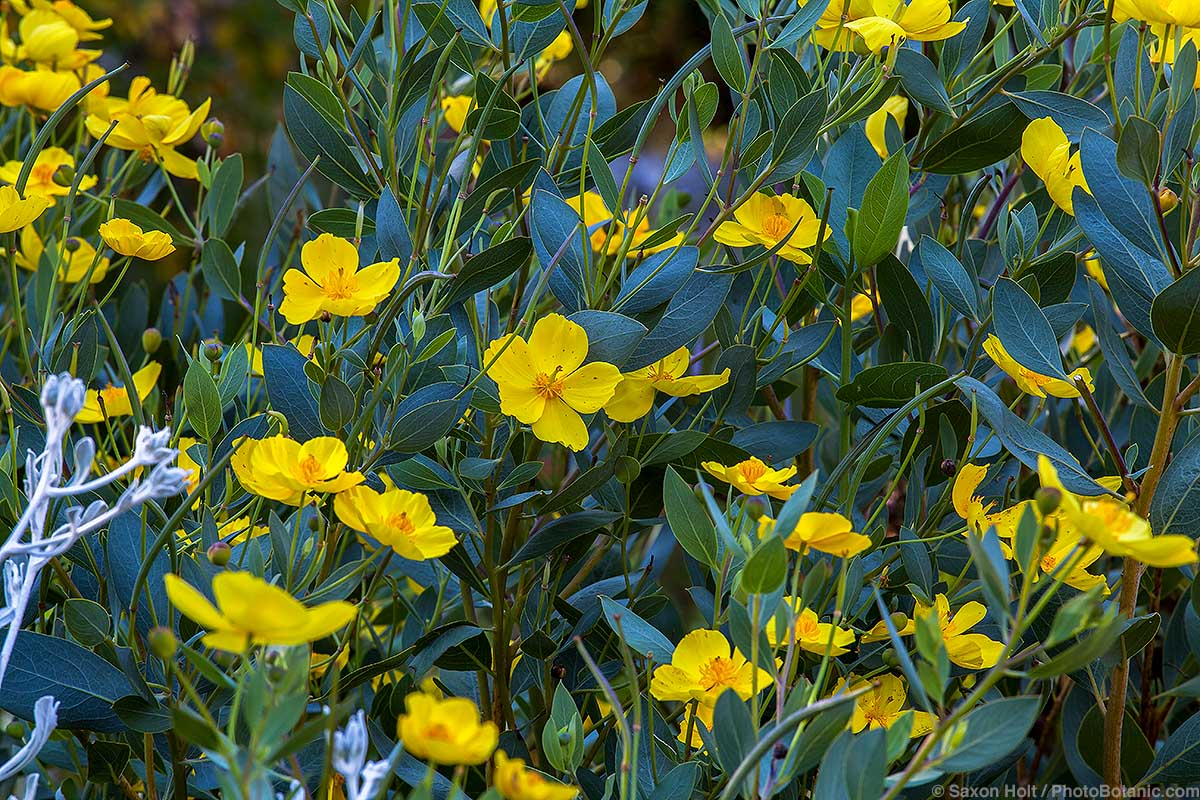
Share This!
Unusual members of the poppy family, bush poppies (Dendromecon species) bear flowers and fruits that resemble those of the perennial California poppy (Eschscholzia californica) but on woody shrubs that can reach six to eight feet tall or more. Leathery, waxy, dark bluish gray-green leaves are a perfect foil for the glossy, bright yellow, saucer-shaped flowers. Flowers are followed by narrowly cylindrical seedpods that explode when dry, sending seed several feet in all directions.
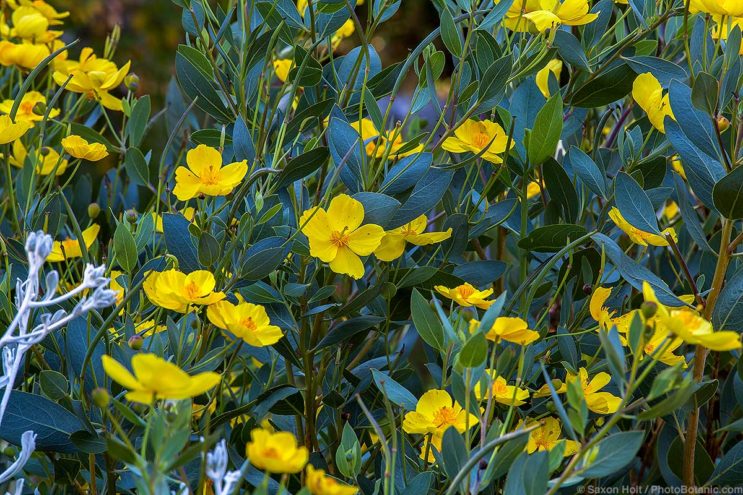
Dendromecon harfordii
Dendromecon rigida, bush poppy, is native to dry slopes and rocky washes in coastal mountains of California and northern Baja California, with some plants found on western slopes of the Sierra Nevada foothills. D. harfordii, island tree poppy, is native to the Channel Islands. The island plant has sometimes been considered and still may be offered as a subspecies of D. rigida.
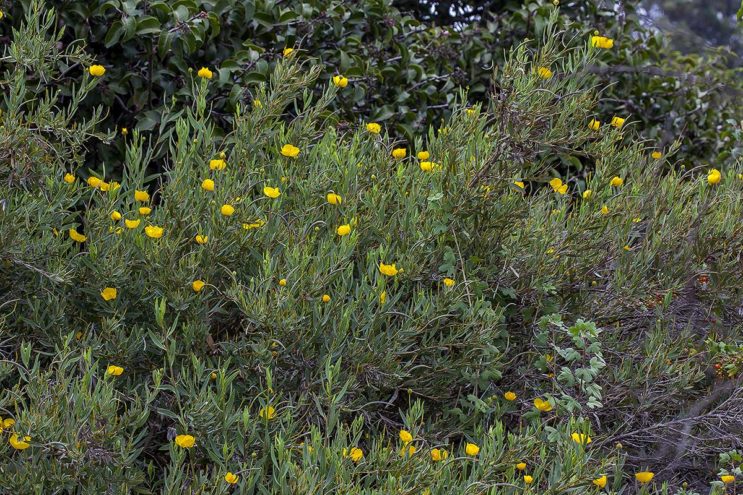
Dendromecon rigida
Dendromecon rigida is usually a smaller and more fine-textured shrub, 4-6 or 8 feet tall and wide, with willowy, finely toothed, narrow leaves. D. harfordii can be much larger, sometimes a treelike 10-12 feet tall and almost as wide; it bears broadly oval, bluer leaves with smooth margins. D. rigida flowers once, from early to mid-spring. D. harfordii just keeps on blooming.
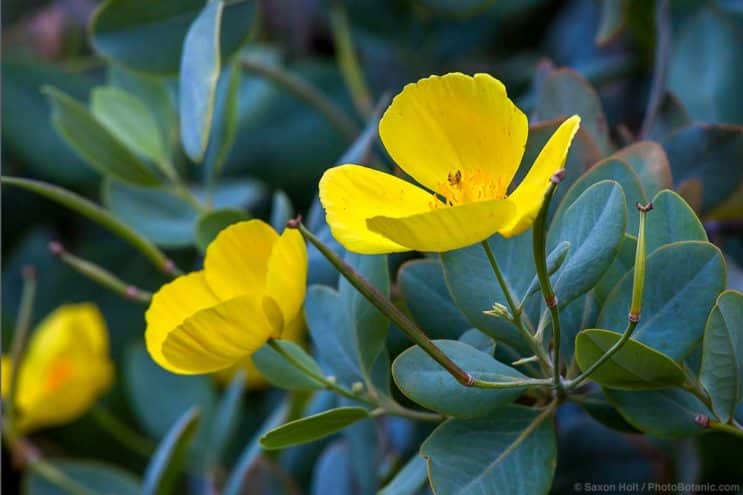
Flowers of Dendromecon harfordii
Both plants need good to excellent drainage and full sun near the coast, sun to part shade inland. Both are best grown where winters are mild and summers are dry.
These are easy, fast growing plants once well established, but they can be difficult to start. Fire followers in the wild, their seeds must be treated before they will germinate. Roots are delicate and easily damaged, so care must be taken when planting them out in the garden. Even well-rooted cuttings may not survive the transition.
For an unpruned or lightly pruned planting on a sunny slope, you might try combining bush or tree poppy with a small-leaved ceanothus such as ‘Julia Phelps’ and an underplanting of the silvery gray-leaved Artemisia ‘Montara’. All need excellent drainage, lots of sun, and protection from summer irrigation, and together they provide pleasing contrasts in texture, form, and color.
Share This!
Related Articles
By: Nora Harlow
By: Nora Harlow
By: Nora Harlow



